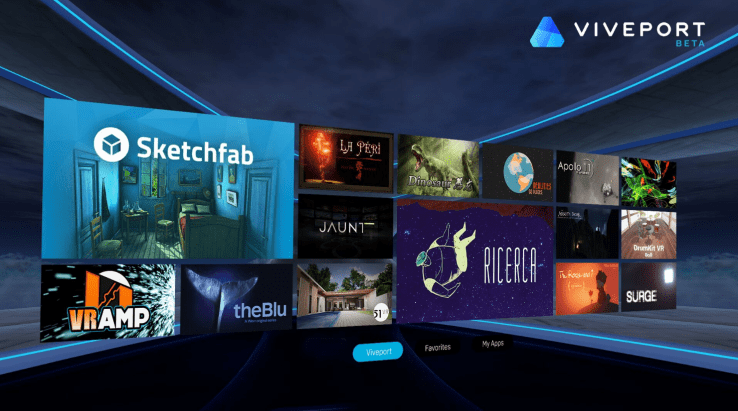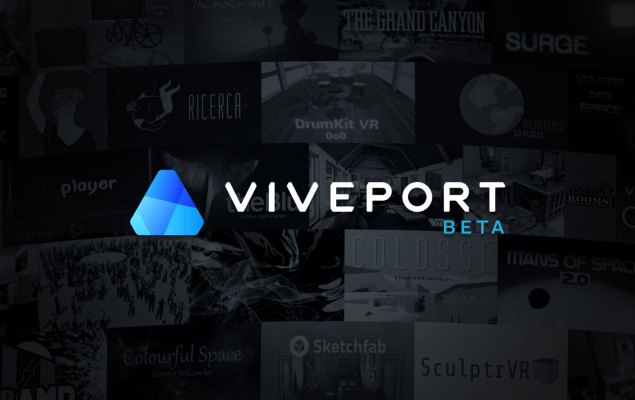As the Vive becomes an increasingly essential part of HTC’s future, the company is making sure that no stone is left unturned when it comes to potential profit. What perhaps began as a side project for the company is turning into its potential financial future as revenues rapidly decline in the company’s handset division.
Today at VRLA, HTC announced that it will be opening a dedicated virtual reality app store called Viveport to host largely non-gaming content verticals that aren’t currently being served by Valve and its Steam store.

HTC says the Viveport store will be available in Vive headsets, web browsers, the PC app and, most interestingly, on a mobile app. HTC has previously not shown off many pursuits in the mobile VR space, which is perhaps a bit ironic given its former status as a major leader in the mobile space.
The Viveport store will largely focus on hosting non-gaming verticals including “education, design, art, social, video, music, sports, health, fashion, travel, news, shopping, creativity tools, and more,” according to the press release. HTC will take a standard 70/30 app store revenue split with developers, potentially opening themselves up to some major profits. The store will also support in-app purchases and subscriptions alongside a more standard pay-to-download model.
This entire situation is perhaps a bit unfortunate on the user experience side, as consumers will now have to visit separate storefronts for separate types of content. It already wasn’t all that clear to begin with as HTC’s holodeck-esque Vive Home section and Valve’s Steam store relay much of the same functionality in terms of separate app-launchers and home screens. Now, you’ll also be downloading experiences from separate corners of the app, with Vive Home prioritized for most non-gaming content, but the Steam store is still just a physical button tap away on the Vive controller.
I also expect the line to grow increasingly murky between what types of content would be found in each store. When I pressed HTC SVP Rikard Steiber on how clean the distinction would be between content on Viveport and the Steam store, he painted a picture of some redundancy with Steam continuing to remain a clear home for “hardcore gaming content.”
“Our recommendation to developers today is that they make sure that they publish [their content] everywhere,” said Steiber.
Though it may be a bit messy at first, HTC’s shift to build a non-gaming storefront is a smart one and will help lend some differentiation to the Vive brand in a field about to be crowded further by the PSVR, which will obviously hold gaming central to its product DNA.
